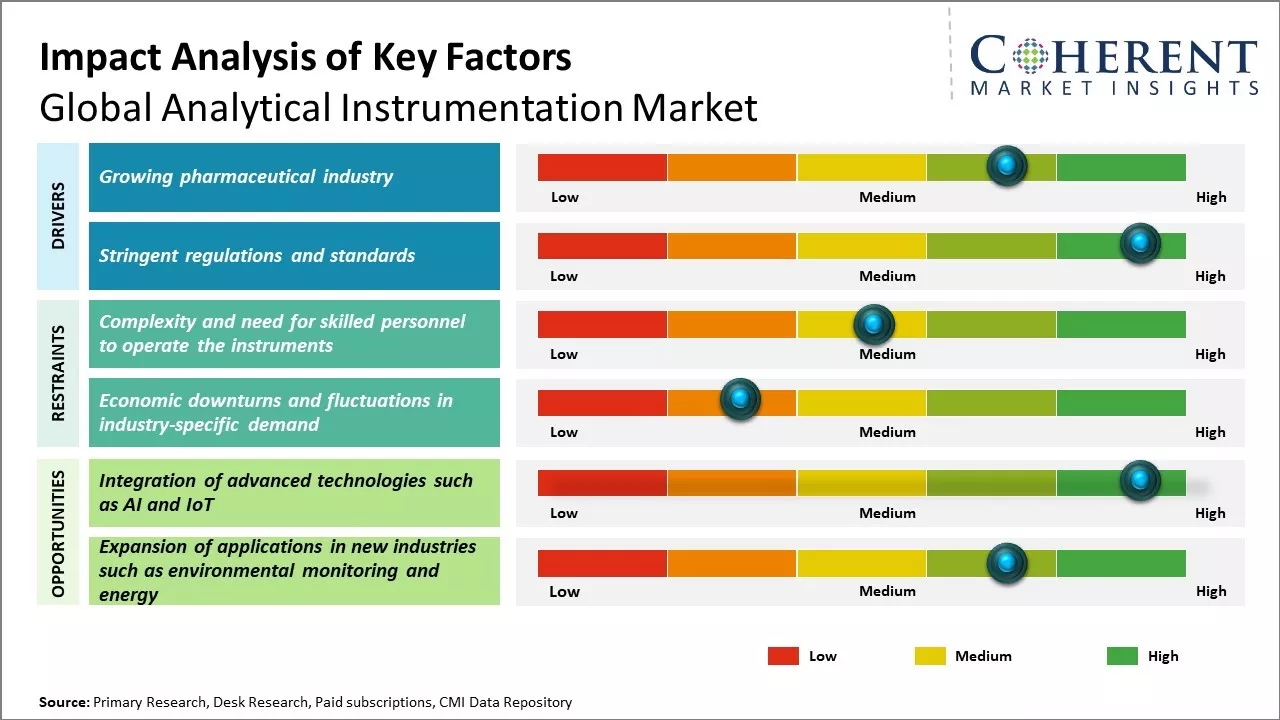The global analytical instrumentation market is estimated to be valued at US$ 51.22 Bn in 2025 and is expected to reach US$ 76.56 Bn by 2032, exhibiting a compound annual growth rate (CAGR) of 5.9% from 2025 to 2032.

To learn more about this report, Request sample copy
This growth can be attributed to the increasing demand for analytical instruments in various industries such as pharmaceuticals, food and beverage, and chemicals. Furthermore, the rising focus on research and development activities and the growing trend towards automation are also driving the market growth.
Market trends in the global analytical instrumentation market include the increasing adoption of advanced technologies such as mass spectrometry, chromatography, and spectroscopy. These technologies offer high accuracy, sensitivity, and specificity, making them essential in various industries for quality control, research and development, and process optimization. Additionally, the growing trend towards miniaturization and portability of analytical instruments is also driving the market growth, as these instruments offer increased convenience and mobility. Furthermore, the increasing focus on environmental analysis and the growing demand for real-time monitoring solutions are also expected to provide significant opportunities for market growth in the coming years.
Growing pharmaceutical industry
The pharmaceutical industry has been undergoing revolutionary changes over the past few decades. Developing novel drugs is now more important than ever to address the unmet needs of patients. Strict regulations also demand thorough testing and analysis at various stages of drug development. This has significantly increased the R&D spending of pharmaceutical companies on analytical instrumentation and services.
Sophisticated tools like chromatography, spectroscopy and lab automation systems are indispensable for drug discovery, formulation development, and quality testing. Chromatography techniques are heavily relied upon for separation, identification and quantification of molecules. High performance liquid chromatography or HPLC has emerged as the primary workhorse for analysis of small molecules. Size exclusion chromatography also finds applications in determining the molecular weights and sizes of proteins, polymers and biological macromolecules.
In the pre-clinical and clinical phases, various analytical methods come into play for chemical profiling, ensuring purity, assessing stability and measuring concentration of active pharmaceutical ingredients in biological matrices. Drug metabolism and pharmacokinetic studies require analytical work to determine absorption, distribution, metabolism, and excretion of potential drug candidates. Scale up and commercial manufacturing activities are closely monitored through analytical testing to guarantee batch-to-batch consistency and compliance with stringent quality specifications.
Comprehensive testing and release of final drug products demands analytical capabilities for dissolution, impurities analysis and content uniformity testing. Bioanalytical applications have witnessed rapid growth too for measuring drugs and metabolites in blood, plasma or tissue samples obtained from pre-clinical and clinical studies. All these expanding responsibilities have driven pharma companies to invest more in advanced analytical instruments, assays and skilled personnel.
The instrumentation market is thus propelled by the escalating analytical requirements of the pharmaceutical industry engaged in innovative drug discovery and developing complex biologics. Intensifying regulation globally and emerging healthcare needs have prompted more R&D expenditures towards safety, efficacy and quality testing - benefiting vendors of analytical equipment and services.
Joining thousands of companies around the world committed to making the Excellent Business Solutions.
View All Our Clients